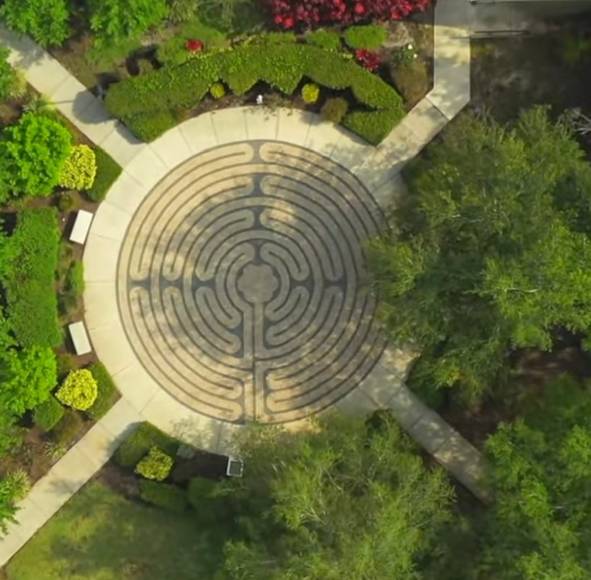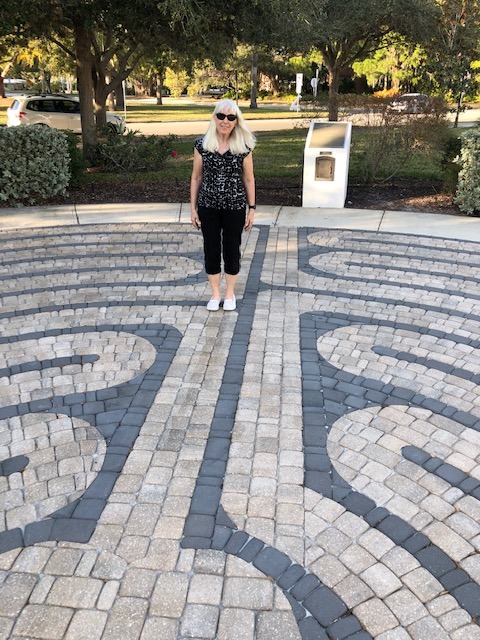Walking a Labyrinth
What is a Labyrinth?
Simply put, the labyrinth is a walkway designed to assist with meditation. It is a tool that helps us to focus thoughts and feelings, if only for a brief time, eliminating the intrusion of the outside world.
A labyrinth is not a maze, nor a puzzle to be solved. Rather, a labyrinth guides us along a single path into the center, and back. It is a spiritual path for a spiritual journey.
Entering a labyrinth is much like entering a cathedral or other holy place. Maintaining a prayerful contenance helps to sense a holy presence and open yourself to God’s Will.
A History of the Labyrinth
Labryinths date back more than 4,000 years, long before Christianity. As with many other pre-Christian symbols, the labyrinth was adopted for Christian use as a tradition that dates from the early middle ages. Specifically, this tradition began in the fourth century, eleven years after Roman Emperor Constantine legalized Christianity. A mosaic labyrinth in a church in Roman North Africa was “Christianized” by adding the words “sancta ecclusia” (holy church) to the center.
There are several designs for labyrinths. The one at St. Mark’s is modeled after the labyrinth embedded in the floor at Notre Dame de Chartres in France (c. 1220). The Chartres Labyrinth represents the culmination of Christian design incorporating the cruciform image, rosette center, and small circles around the perimeter for a lunar calendar to calculate the date of Easter.
Why walk a Labyrinth?
Many think of the walk in and out of the labyrinth as a “purposeful walk”. You define the purpose.
Some examples are:
- to relax
- to let go of worries and concerns
- to cope with grief and loss
- for insight on specific problems
- for healing of relationships
- to open the flow of creativity
- for forgiveness (of self and others)
- to express thanksgiving to God
- for support with a life-altering event
- for regular daily prayer
Getting Started
A labyrinth walk consists of three phases: releasing, receiving, and returning.
Releasing: Enter the labyrinth at the starting point and follow the path towards the center. As you walk, feel yourself letting go of all the details of your life. Try to shed all thoughts and distractions. Open your heart and mind as you walk towards the center.
Receiving: Once in the center of the labyrinth, stay as long as you like. This is a place of meditation and prayer. You may find clarity of thought, insight, illumination, or enhanced focus. Be open to receive what is there for you.
Returning: As you leave, retrace your steps along the path to the starting point. This final part of your spiritual journey is where healing occurs. Open yourself to God, to your Higher Power, becoming grounded and energized.


For More Information:
www.gracecathedral.com
www.labyrinthsociety.org
